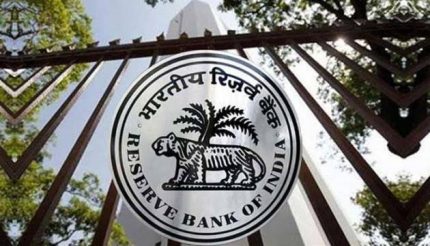The Reserve Bank of India last week introduced the standing deposit facility (SDF) as a tool to control inflation in the country through liquidity absorption. It restored the pre-pandemic liquidity corridor of 50 basis points by fixing SDF at 3.75 per cent as the floor for the liquidity adjustment facility (LAF) and marginal standing facility at 4.25 per cent. So, why did the central bank introduce SDF when the reverse repo rate can also be used to absorb liquidity?What Is Reverse Repo Rate?
The reverse repo rate, a liquidity absorption tool, is the interest rate at which the RBI borrows money from commercial banks. In its first bi-monthly monetary policy review for 2022-23, the central bank has decided to keep it unchanged at 3.35 per cent. The central bank absorbs liquidity by raising it.What Is SDF?
Read More:-Linking PF account with PAN can save you from TDS, here’s how
The standing deposit facility allows the RBI to absorb excess cash from the economy by sucking liquidity from commercial banks without giving government securities in return to the lenders. The RBI has fixed the SDF rate at 3.75 per cent.
Under the SDF, the banks can place deposits with the RBI on an overnight basis. The RBI, however, retains the flexibility to absorb liquidity for longer tenors under the SDF with appropriate pricing, as and when the need arises. All liquidity adjustment facility (LAF) participants will be eligible to participate in the SDF scheme, according to the RBI’s website.
SDF vs Reverse Repo
Both SDF and reverse repo rate are used by the central bank to absorb liquidity in the system. The difference is that through reverse repo operations, the RBI needs to deposit collateral or government securities to borrow from commercial banks; while SDF does not require any such collateral.
Read More: Opening PPF account? Check if your bank allows online investment or need you to visit branch
Crisil Chief Economist D K Joshi said, “Using SDF, the RBI can now absorb liquidity from the system without depositing any collateral, and this instrument is more convenient and effective.”
Rating agency ICRA in its note said the RBI has decided to introduce the SDF as a means of liquidity absorption, which unlike the fixed rate reverse repo (FRRR) used for overnight liquidity absorption can be utilised without requiring eligible securities as collateral.
HDFC Chief Economist Abheek Barua said the standing deposit facility is just a reverse repo rate without collateral, broadly. “But, reverse repo rate does not qualify to be adjusted as SLR by the commercial lenders, while deposits under the SDF can be used by the banks as SLR.”
On asked why the RBI preferred SDF over raising reverse repo, an economist, requesting anonymity, said, “Sometimes the RBI does not have adequate bonds to suck huge liquidity like what happened in the case of demonetisation, and sometimes, the government is apprehensive about depositing collateral in excess amount.”When Was SDF Introduced?
The idea of an SDF was first mooted in the Urjit Patel Monetary Policy Committee report in 2014, which later received the government’s nod following an amendment to the RBI Act in 2018, vide the Finance Bill.
The necessary legislative amendments to introduce SDF was made in 2018 through the Finance Bill and the RBI has refrained from utilising the facility for a few years now. The idea of an SDF was first mooted in the Urjit Patel Monetary Policy Committee report in 2014.Repo Rate and MSF
Repo rate is the interest rate at which the RBI lends money to the commercial banks and currently stands at four per cent, while the marginal standing facility (MSF) is a window for banks to borrow from the central bank in an emergency situation when inter-bank liquidity dries up completely and stands at 4.25 per cent.
Inflation Rate Currently
The RBI absorbs liquidity from the system to control inflation. The central is mandated to keep inflation within the range of 2-6 per cent. While the CPI-based inflation rate in February stood at 6.07 per cent, the rate in January was 6.01 per cent.



































